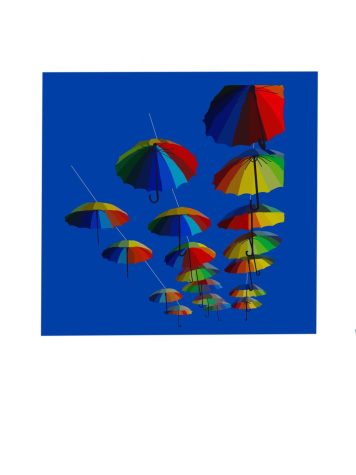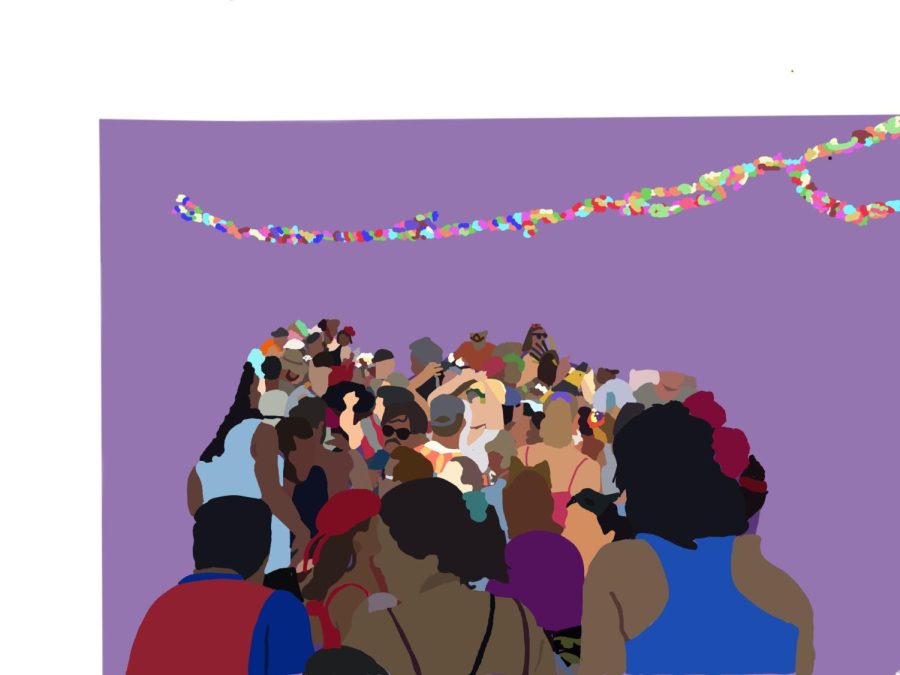Carnivals celebrated worldwide with parades and “blocos”
“Carnaval de Bloco” means block carnival or a block party. These usually happen in a park or plaza by a neighborhood. There are decorations, speakers, and food and drinks.

(Ash Magalhaes)
The live music, world-class parades and colorful costumes are all parts of the worldwide celebration that is the Brazilian Carnival. This year, it begins on Friday, Feb. 17 and lasts until Saturday, Feb. 25. Carnival is celebrated around the world in many cities such as New Orleans, Sydney, Australia and Toronto, Canada on varying dates.
Carnival in Rio de Janeiro
Beginning on Ash Wednesday, the Brazilian Carnival takes place for three days and consists of partying and celebrating up to Lent. Throughout Rio de Janeiro, people have massive block parties or street celebrations, or “blocos,” that take place in several neighborhoods throughout the city.
According to Carnivaland, the carnival is “the mother, the mecca, the king of all carnivals”. The parties continue for twenty four hours of the day. “Rio de Janeiro transforms into the biggest party on the planet, a party that is attended by five million people from all around the world” (Carnavaland).
The bloco consists of a variety of activities for all ages and religion. One activity is parading around the city with lively dancing and musical instruments, usually dressed in brightly colored costumes. Colorful costumes of street dancers flood the streets of the
Carnival. According to Rio Carnival, “These street dancers and street bands have a long history, tracing their origins back to the 1800s during the creation of the Cordoes.” Music and dance are a crucial part of the Carnival, particularly samba. According to Britannica, samba is a “ballroom dance of Brazilian origin, popularized in western Europe and the United States in the early 1940s”.
A highlight of the carnival is the parade where people dance the samba. The Carnival stretches across all of Rio de Janeiro — from the beaches to the suburbs to the heart of the city. People have both public and private celebrations. People from all ages come together to celebrate. In addition to being welcoming to all ages, it’s open to the LGBTQ+ community and other minority groups.

(Ash Magalhaes)
History of the Brazilian Carnival
According to Carnival in Brazil, the Brazilian Carnival is a mix of a variety of cultures. At first, the Carnival was a mixture of cultures such as Christian, Egyptian, Greek and Roman. Then, the mixture of cultures have grown to combine with cultures like African. In
Ancient times, the carnivals were centered around the winter and spring solstices, and spring and fall equinoxes, according to Carnavaland. There were also modern carnivals and parades that took. Appearing in Brazil in the 1830s, the Carnival was inspired by the festivals in European cities like Paris, France.
Starting in the 1960s, blocos were represented in the street festival by determining important parts of each block party in the festival such as floats, dances, and music. The dance and music of Samba was a part of Brazilian carnival history as it began in Brazil. According to Rio Carnaval, “One of the most important moments in carnival history happened in the early 1920s when Samba started to become popular among the locals of Brazil.” place. In 1823, Cologne, Germany started the first modern Carnival parade and inspired other cities to start their own traditions for their own Carnival.
Global Carnival
Carnivals all around the world are celebrated with different cuisines, entertainment, and magical costumes. There are eight main locations Carnival has taken or often takes place. The first one is in New Orleans around February 25th. People flood the streets in Mardi Gras colors and traditional masks. According to Cond Nast Traveler, beads of purple, green and gold are thrown from balconies and floats.” The second takes place in Oruro, Bolivia between February 21st and the 24th. Bolivia’s carnival purpose is to celebrate the indigenous culture. In addition, fun activities include throwing water balloons at each other and folk dancing. People dress up in costumes that are influenced by traditional folk dancers.
The third carnival that takes place is located in Barranquilla, Columbia — Columbia’s largest Carnival celebration — during February 22nd through the 25th. In this carnival, you will see cultures like African, Middle Eastern, and European. The fourth carnival is in Dusseldorf, Germany between February 20th and the 26th. It is one of Germany’s biggest and boldest Carnival. Sweets and trickles are thrown throughout the festival. The fifth Carnival location is in Sydney, Australia is another that goes from February 14th to March 1st. It is longer than most and celebrates LGBTQ+ culture with activities such as parades, drag queen parties, and exhibitions. The sixth is located in Toronto, Canada — July 30th through August 2nd. It is known for being one of the largest festivals in North America. The costumes consist of large feathers, headpieces, and jewelry. The seventh takes place in London, England between August 30th and the 31th. The main focus is to make Caribbean immigrants feel welcomed by allowing them to show their native cultures. People dress in accessories to show off their support. In Ancient times, the carnivals were centered around the winter and spring solstices, and spring and fall equinoxes, according to Carnavaland. There were also modern carnivals and parades that took place. In 1823, Cologne, Germany started the first modern Carnival parade and inspired other cities to start their own traditions for their own Carnival.







